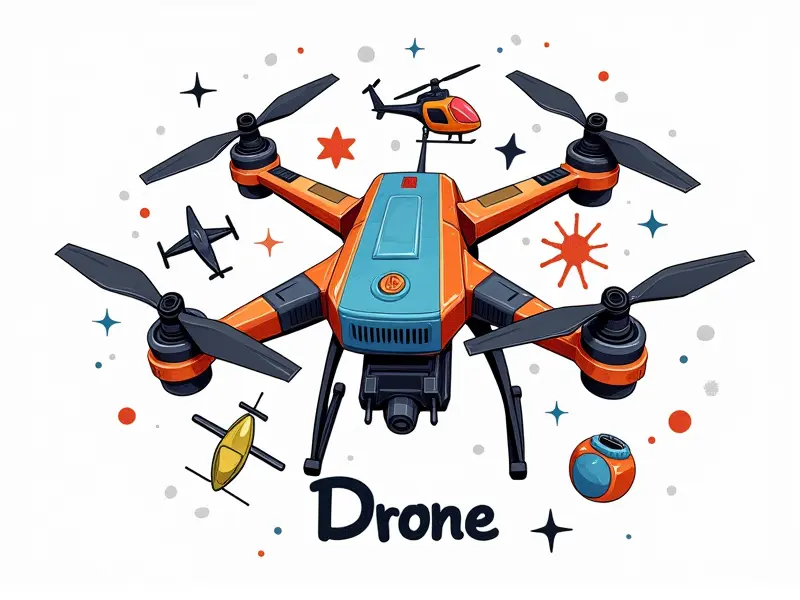What is needed to make a drone?

If you're interested in building your own drone, it's essential to understand the components and tools required for successful construction. From selecting the right parts to assembling them into a functional aircraft, this article will guide you through every step of the process.
Essential Components for Drone Building
The foundation of any drone build lies in its core components. Here’s what you need:
- Frame: The structural base that holds all other parts together.
- Motors and Propellers: Provide the thrust necessary for flight.
- Flight Controller: Manages the drone's stability and control.
- Battery: Powers the entire system, ensuring extended flight times.
- ESC (Electronic Speed Controller): Regulates motor speed based on input signals from the flight controller.
- Transmitter and Receiver: Facilitate remote control of your drone.
- Sensors: Include GPS, compass, barometer for navigation and stability.
DIY Drone Kit Must-Haves
A comprehensive DIY kit should include everything you need to start building. Key items in such kits typically are:
- All-in-One Flight Controller Board: Integrates essential control features.
- Pre-assembled Frame Kit: Saves time and ensures structural integrity.
- Pack of Motors and Props: Ensures you have enough for redundancy or replacement.
- Battery Charger and Batteries: Essential for maintaining power supply.
Parts Needed for Homemade Drones
To build a drone from scratch, you’ll need to gather several specific parts:
- Metal or Carbon Fiber Frame: Durability and weight considerations are crucial.
- KV Motors and Propellers: Balance thrust with power efficiency.
- PWM ESCs (Electronic Speed Controllers): Control motor speed accurately.
- Battery Voltage Regulator: Ensures stable voltage during flight.
- FPV Camera and Video Transmitter: For first-person view and real-time monitoring.
Beginner's Checklist for Drone Assembly
Starting out can be daunting, but with this checklist, you’ll have a clear path forward:
- Gather All Components: Ensure you have everything listed in your kit.
- Read the Manual: Understand how each part works and interacts.
- Test Individual Parts: Verify functionality before assembly.
- Fly Safely: Start with short, controlled flights in open areas.
Key Ingredients for Drone Construction
The components listed above are only the beginning. Here are additional elements that enhance your drone’s performance:
- Lipo Batteries (LiPo): High-capacity and lightweight.
- Battery Monitor Module: Keeps track of battery health.
- RSSI Indicator: For monitoring signal strength during FPV flights.
- LED Strip: Useful for visibility in low-light conditions.
Top Tools for DIY Drone Projects
The right tools make the difference between a successful build and an endless struggle. Consider these essential items:
- Screwdrivers (Phillips & Flathead): For assembling small parts.
- Multimeter: To test electrical components.
- Wire Stripper and Crimping Tool: Essential for wiring connections.
- Soldering Iron: Necessary for soldering wires and circuit boards.
Core Elements of a Custom Drone
A custom drone requires careful planning and selection of components. Focus on these elements to achieve your desired outcomes:
- Custom Frame Design: Tailor the design to fit specific needs.
- Advanced Flight Controller Features: Such as automatic return-to-home, waypoint navigation.
- Sensor Integration: GPS, IMU (Inertial Measurement Unit), and other sensors for enhanced stability.
Basics for Assembling RC Aircraft
The principles of assembling a drone are similar to those of building an RC aircraft. Here’s what you need to know:
- Motor Mounting: Securely attach motors to the frame.
- Wiring Connections: Properly connect ESCs, flight controller, and power sources.
- Battery Placement: Ensure optimal center of gravity for balanced flight.
Start Your Drone Build Today!
With the right components and tools at hand, you’re ready to start your drone-building journey. Whether it’s a basic quadcopter or an advanced FPV setup, every step brings you closer to achieving aerial mastery.
From Idea to Flight: Drone Build Basics
Turning a concept into reality involves several stages:
- Idea Generation: Define your goals and requirements for the drone.
- Research & Planning: Gather information about components, tools, and techniques.
- Purchase Materials: Acquire all necessary parts and accessories.
- Assembly Process: Follow instructions to build your drone step-by-step.
Components for Building FPV Drones
FPV (First Person View) drones add a thrilling element of real-time video transmission. Key components include:
- Fully Integrated Video Transmission System: Ensures clear, delay-free footage.
- High-Definition Camera Module: Captures detailed and smooth video streams.
- Vibration Dampening: Minimizes camera shake for stable shots.
Conclusion
Building a drone is an exciting venture that combines creativity, technical skill, and passion. By understanding the essential components, tools, and processes involved, you can successfully construct your own custom drone. Whether it’s for recreational flying or professional use, the journey from idea to flight is rewarding and endlessly fascinating.

